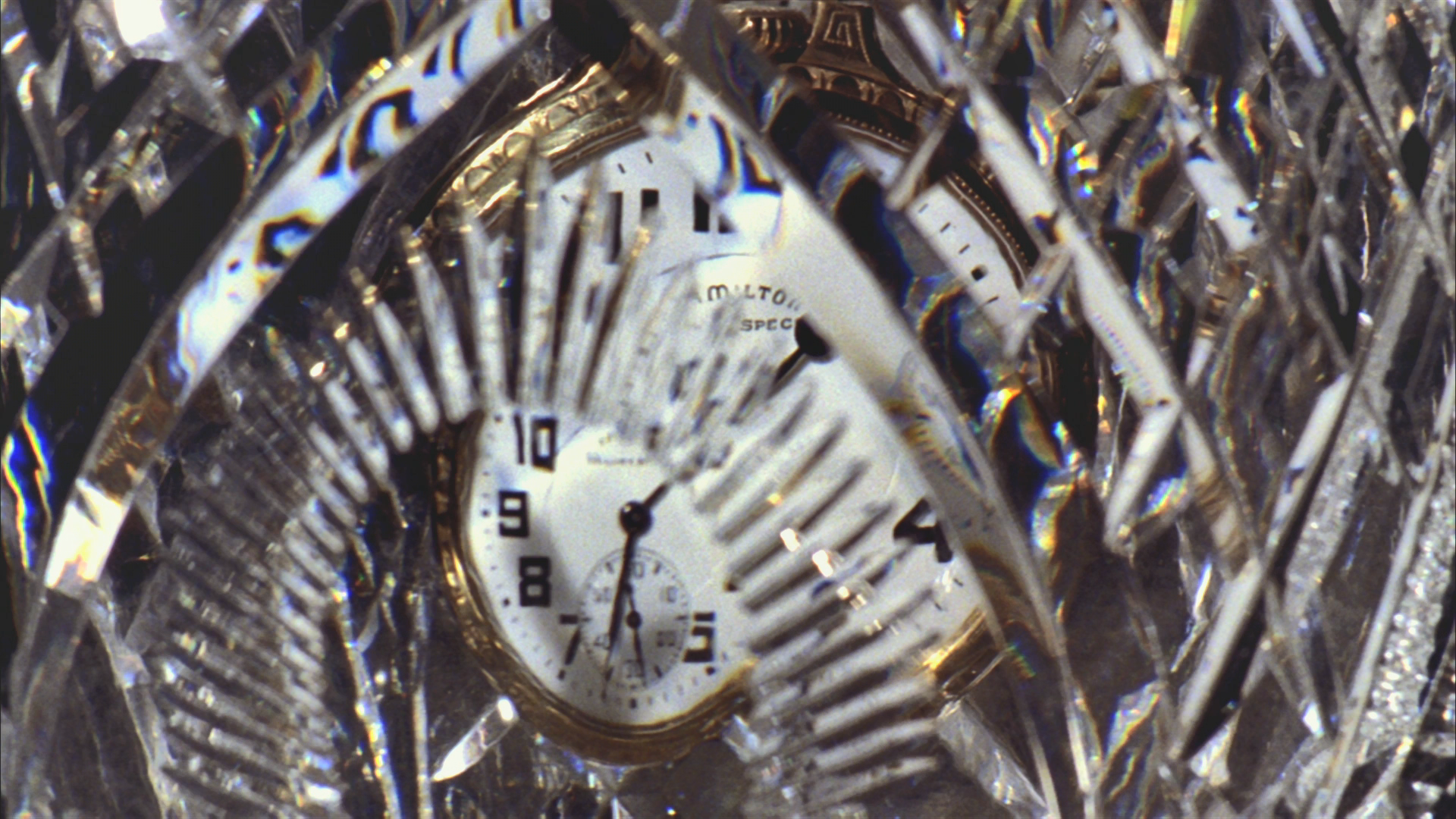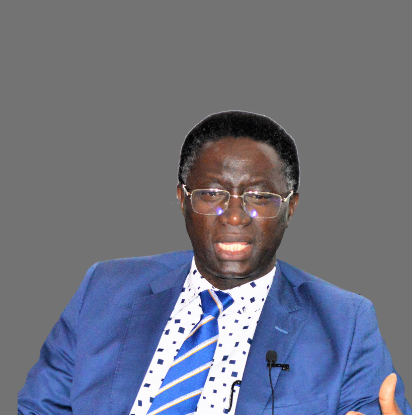Scientists create first-ever visible time crystals using light — and they could one day appear on $100 bills
By Ben Turner
Copyright livescience

Skip to main content
Close main menu
Live Science
Sign up to our newsletter
View Profile
Search Live Science
Planet Earth
Archaeology
Physics & Math
Human Behavior
Science news
Life’s Little Mysteries
Science quizzes
Newsletters
Story archive
Bright orange shark discovered
Egyptian queen coin found in Jerusalem
Do humans and chimps share 99% DNA?
Comet 3I/ATLAS’s tail growing
Blood moon in photos
Don’t miss these
Electronics
Quantum materials with a ‘hidden metallic state’ could make electronics 1,000 times faster
Quantum Physics
‘Paraparticles’ would be a third kingdom of quantum particle
Scientists heat gold to 14 times its melting point — without turning it into a liquid
Particle Physics
Scientists watch a single electron move during a chemical reaction for first time ever
Small, room-temperature quantum computers that use light on the horizon after breakthrough, scientists say
‘Time machine’ reveals hidden structures in the universe’s first galaxies
Stunning ‘sun dogs’ could sparkle in alien skies, James Webb Space Telescope suggests
Scientists have finally made an elusive meteorite diamond, predicted to be 50% harder than Earth diamonds
Scientists achieve ‘magic state’ quantum computing breakthrough 20 years in the making
Particle Physics
‘A bundle of microscopic tornadoes’ may be building the cosmic web
Physics & Mathematics
Meet the ‘neglectons’: Previously overlooked particles that could revolutionize quantum computing
Millions of qubits on a single quantum processor now possible after cryogenic breakthrough
Black Holes
Scientists use Stephen Hawking theory to propose ‘black hole morsels’ — strange, compact objects that could reveal new physics
Trippy liquid ‘fireworks’ appear when scientists try to mix unmixable fluids
Scientists use quantum machine learning to create semiconductors for the first time – and it could transform how chips are made
Physics & Mathematics
Scientists create first-ever visible time crystals using light — and they could one day appear on $100 bills
Ben Turner
9 September 2025
The visible patterns produced by the time crystals could be used for data storage and anti-counterfeiting designs.
When you purchase through links on our site, we may earn an affiliate commission. Here’s how it works.
Making time crystals visible under microscopes could open up a range of new applications.
(Image credit: Getty Images)
Scientists have developed the first-ever time crystals that are visible to the human eye, and they could one day make their way onto $100 bills.
The time crystals emerge from the kinks that appear when light is shone onto liquid crystals — the same as those found inside LCD screens .
Unlike previous time crystals, these “psychedelic tiger stripes” are visible, researchers said in a statement. This gives scientists a new window to probe this bizarre phase of matter and also has a number of practical applications, from telecommunications to anti-counterfeiting designs and data storage. The researchers published their findings Sept. 4 in the journal Nature Materials.
You may like
Quantum materials with a ‘hidden metallic state’ could make electronics 1,000 times faster
‘Paraparticles’ would be a third kingdom of quantum particle
Scientists heat gold to 14 times its melting point — without turning it into a liquid
“They can be observed directly under a microscope and even, under special conditions, by the naked eye,” study lead author Hanqing Zhao, a graduate student in the Department of Physics at the University of Colorado Boulder, said in the statement.
First proposed in 2012 by the Nobel prize-winning physicist Frank Wilczek, time crystals are groups of particles that repeat in time, much like other crystals repeat in space. This behavior is intriguing to physicists — physical laws are entirely symmetrical in space and mostly in time, leading to outcomes that are the same regardless of their direction in either space or time.
But crystals break this symmetry, arranging themselves in a preferred spatial direction. This means that, despite physical laws retaining their underlying symmetry, these laws create different outcomes for crystals depending on the direction they act upon them.
Related: Scientists unveil new type of ‘time crystal’ that defies our traditional understanding of time and motion
Sign up for the Live Science daily newsletter now
Get the world’s most fascinating discoveries delivered straight to your inbox.
Contact me with news and offers from other Future brandsReceive email from us on behalf of our trusted partners or sponsorsBy submitting your information you agree to the Terms & Conditions and Privacy Policy and are aged 16 or over.
And in the same way that crystals break symmetry in space, time crystals break them in time. They exist in the lowest possible energy permitted by quantum mechanics, and oscillate between two states without slowing down.
These remarkable properties have led to claims that time crystals are perpetual motion machines that violate the second law of thermodynamics, but this isn’t the case. The crystals, which are driven by photons, or light particles, cannot lose or gain energy; all the light hitting them does is cause them to repeat their two-state shuffle.
Since Wilczek’s proposal, physicists have created and studied time crystals inside diamonds, quantum computers and rubidium atoms excited to hundreds of times their typical size. Yet these crystals can’t be directly seen, and are instead studied through the fluctuations of laser light.
To design their visible time crystals, the researchers behind the new study sandwiched liquid crystals — rod-shaped molecules that behave both like solids and liquids — between two dye-coated pieces of glass. If they’re squeezed together in the right way, these molecules form kinks that can move around and even behave like atoms.
“You have these twists, and you can’t easily remove them,” study co-author Ivan Smalyukh, a professor of physics at the University of Colorado Boulder, said in the statement. “They behave like particles and start interacting with each other.”
RELATED STORIES
—Otherworldly ‘time crystal’ made inside Google quantum computer could change physics forever
—Scientists just made the largest quasicrystal ever — because one of them bet it couldn’t be done
—Physicists link two time crystals in seemingly impossible experiment
By shining light on the glass pieces, the scientists caused the dye molecules coating them to shift in response and squeeze the liquid crystals in turn, forming thousands of new kinks that danced across the solution in interactions that repeated regularly over time. Even when the researchers raised or lowered the temperature, the kinks’ movements remained unchanged.
“Everything is born out of nothing,” Smalyukh said. “All you do is shine a light, and this whole world of time crystals emerges.”
Beyond advances in fundamental physics, the researchers say their new system could one day be developed into “time watermarks” whose distinct patterns will make higher denomination bills harder to counterfeit. Stacking the crystals could also create even more complicated patterns that could store large quantities of data.
“We don’t want to put a limit on the applications right now,” Smalyukh said. “I think there are opportunities to push this technology in all sorts of directions.”
Social Links Navigation
Acting Trending News Editor
Ben Turner is a U.K. based writer and editor at Live Science. He covers physics and astronomy, tech and climate change. He graduated from University College London with a degree in particle physics before training as a journalist. When he’s not writing, Ben enjoys reading literature, playing the guitar and embarrassing himself with chess.
You must confirm your public display name before commenting
Please logout and then login again, you will then be prompted to enter your display name.
Quantum materials with a ‘hidden metallic state’ could make electronics 1,000 times faster
‘Paraparticles’ would be a third kingdom of quantum particle
Scientists heat gold to 14 times its melting point — without turning it into a liquid
Scientists watch a single electron move during a chemical reaction for first time ever
Small, room-temperature quantum computers that use light on the horizon after breakthrough, scientists say
‘Time machine’ reveals hidden structures in the universe’s first galaxies
Latest in Physics & Mathematics
Why does the universe exist?
Scientists watch a single electron move during a chemical reaction for first time ever
Why can’t we walk through walls if atoms are mostly empty space?
Meet the ‘neglectons’: Previously overlooked particles that could revolutionize quantum computing
Lightning on Earth is sparked by a powerful chain reaction from outer space, simulations show
‘Paraparticles’ would be a third kingdom of quantum particle
Latest in News
Scientists create first-ever visible time crystals using light — and they could one day appear on $100 bills
Scientists are finally learning what’s inside mysterious ‘halo’ barrels submerged off Los Angeles
Gigantic ‘letter S’ spotted on the sun just before a ‘dark eruption’ hurls a fiery shadow at Earth
Microsoft’s new light-based computer is inspired by 80-year-old technology — it could make AI 100 times more efficient
‘Extraordinary’ Roman helmet from war-ending battle found in the sea off Sicily
New photos of comet 3I/ATLAS reveal its tail growing before our eyes
LATEST ARTICLES
Scientists are finally learning what’s inside mysterious ‘halo’ barrels submerged off Los Angeles
Microsoft’s new light-based computer is inspired by 80-year-old technology — it could make AI 100 times more efficient
I watched scientists view the interstellar comet 3I/ATLAS in real time. Here’s what they saw.
Giant ‘chessboard’ surrounds Idaho river in bizarre astronaut photo
‘Extraordinary’ Roman helmet from war-ending battle found in the sea off Sicily
Live Science is part of Future US Inc, an international media group and leading digital publisher. Visit our corporate site.
Contact Future’s experts
Terms and conditions
Privacy policy
Cookies policy
Accessibility Statement
Advertise with us
Web notifications
Editorial standards
How to pitch a story to us
Future US, Inc. Full 7th Floor, 130 West 42nd Street,
Please login or signup to comment
Please wait…



